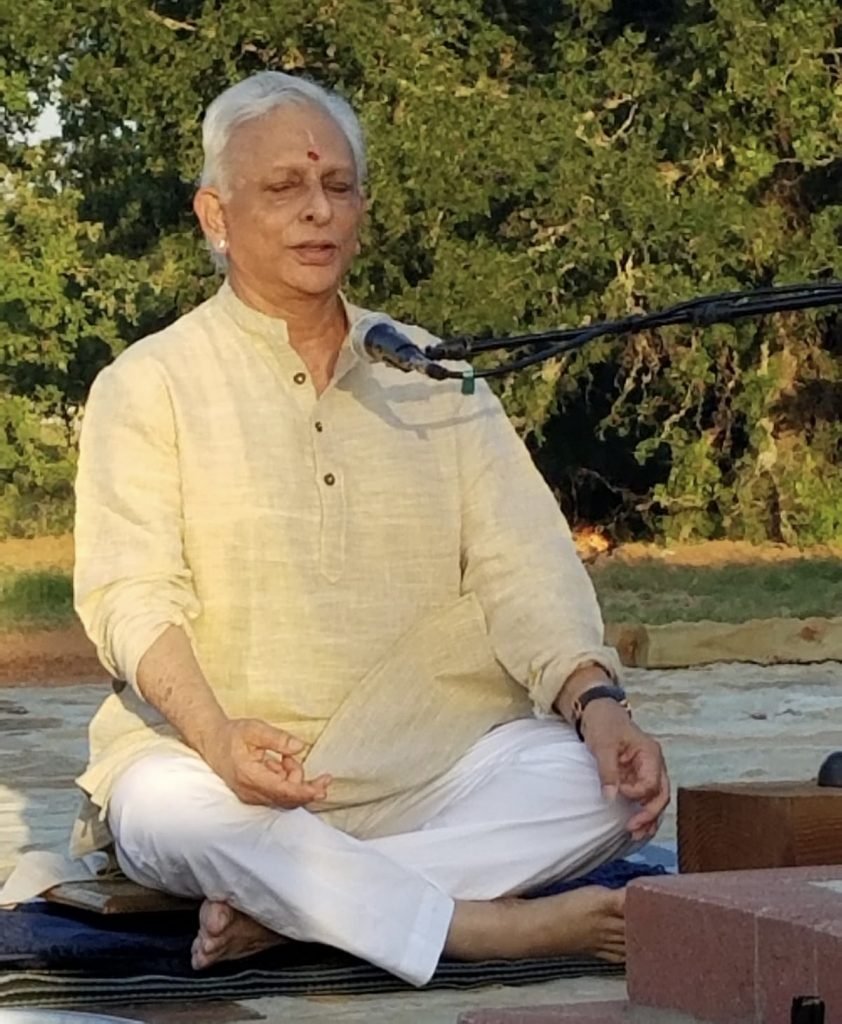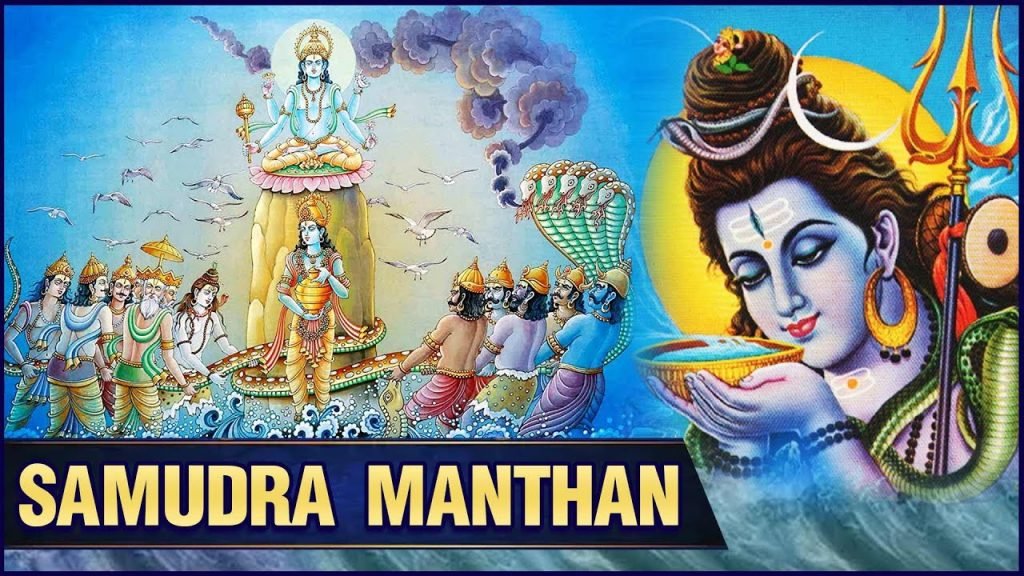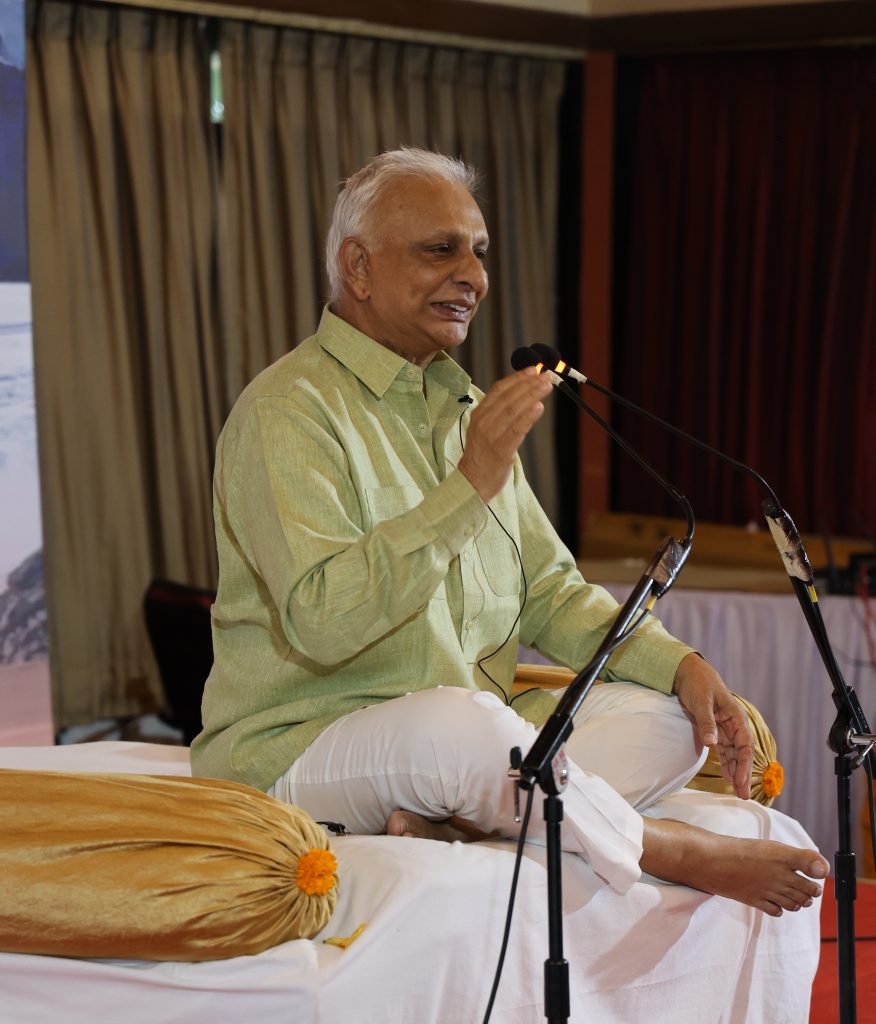In Sanskrit, the word for churning-up is ‘manthan’.
It’s only when the mind is churned-up that it can explore fresh horizons; otherwise, it becomes a fossilized mind that is of no use to anyone, including its owner.
So, when the mind is churned-up, it quite often happens on the psychological side.
I am talking now about the experiential side, which has to do with meditation.
What happens when the mind is shaken up?
According to the great myth of the churning of the oceans in ancient times by the Gods – by the Devas and the Asuras – what happened?
The Devas and the Asuras churned the ocean of milk. What was flung out first was poison, that too the most dangerous kind called ‘hala hala visha’ – which could have annihilated the entire creation.
The story is that the great God, Shiva, the Lord of destruction, and also the symbol of the one with the third eye or the eye of intuition, the eye of understanding, lapped up the poison and saved the world.
So, it’s quite possible that when the mind is churned, so many poisons from its innermost depths come to the surface and then they vanish. There is no other way they can be taken out. From the point of view of yoga psychology, bottling up is not the answer.
Taking them out – that’s where tantra comes into the picture, where one’s emotions, one’s fears, one’s anxieties, one’s desires are all brought to the surface before they evaporate; they vanish once for all.
How can the mind become quiet?
The mind that always jumps around like a monkey? How do I make it calm and still so that I can go deep into the reservoir of all peace and energy and creativity? How do I do it? Is there a way? Can it be done as a deliberate act?
Well, the great Rishis have said that when the mind becomes still, when it has reached its original state of complete vacuity, stillness, then it’s full of energy, and not otherwise.
It’s no more dissipated and from such a mind springs forth creativity, creative thought and creative action and great joy for it has somehow come out of the throes of sorrow.
Sloka 3 of Section 2 of the Keno Upanishad is a rather startling statement. It says:
Yasyamatam tasya matam matam yasya na veda sah
Avijnatam vijanatam vijnatam avijanatam
This means: Those who think that they know, do not know and those who think they do not know, perhaps they do know. Those who think they understand it, do not understand it. Those who think that they do not understand, perhaps do understand it.
Now, don’t you see how wonderfully the idea of fossilizing your thoughts is dealt with in the Upanishad? It says that you cannot form an image or come to a final conclusion about something that is constantly on the move, which is the mind and the Self.
It is constantly expanding, it never stops and therefore, if you think it is this and forget about it and say this is what it is, it cannot be that. It is ever on the move and it is not that which can be understood by the ordinary modes of thought.
That Supreme Truth, the Self that you seek, is beyond the understanding of the ordinary modes of linear thinking. It can be understood only when the mind, having discovered the futility of all the exercises of ordinary thinking, has quieted down and become absolutely still.
When it thus becomes still, then the mind has reached its source and the source is the creative source of everything in this universe. And that source is the Supreme Being. So, therefore, if somebody says he knows, he does not know. That which he says he knows cannot be known by the ordinary mind. Perhaps, if he says ‘I do not know,’ he is confessing the fact that, with the ordinary faculties available, one cannot understand it and, therefore, one does not know. This opens up the possibility of it being known in some other way.
Now, bringing it down to ordinary life, to day-to-day experience, it is as if you have a problem that appears insurmountable and you have tried all your known ways of dealing with it. It’s not solved, you have tried everything, from what the expert says to what the quack says, and it doesn’t work.
The problem still persists. You try again, harder and harder and you become desperate. You get into what is now so common – depression.
The Upanishadic way of solving this problem, whatever it is, is to forget about this problem for the time being. Let the problem go to hell. Drop the problem, saying, ‘I am not going to think of this anymore’ and then go for a retreat for a day or two, away from your normal circumstances.
Forget all about the problem, say, ‘Maybe I won’t find it, it doesn’t matter but I am not going to go into that thing called the depression’.
‘Well, I’ll think about it some other time, but now I am going to let my mind rest because there is no other way this can be sorted out’.

Believe me, if you do this, you will suddenly find that one day, that problem which you were trying to solve has been solved from nowhere, through no known method. All you had to do was to let your mind relax and be free of it for a while—to be free of the obsession, any kind of obsession; be it obsession with knowledge or obsession with any other thing.
Actually, obsession conditions the mind, it doesn’t free the mind; and when the mind is free, it finds its own answer that comes like a flash. The answer doesn’t come from heaven, it comes from I don’t know where, but it comes from within, perhaps.
Whether it is a physical problem or a mental problem, a psychological problem or a spiritual problem, the most important thing is that the body has to be fit; the mind has to be calm, quiet and relaxed, not asleep, of course. It has to relax to be able to think clearly and, sometimes even to go beyond thought and begin to understand that which lies beyond the ordinary state of consciousness.

When one does the sadhana that one has been taught – the kriya, the meditation, the japa and so on – one is preparing the ground for sitting still and giving attention.
You are keeping the room in order: sweeping it, cleaning it, sweeping off the cobwebs, opening the windows, pulling the curtains, you are ready. Then, infinite patience is required. The breeze is definitely going to blow in.
When it will come, nobody knows. When it comes, it comes in a flash. That is why all this preparation is necessary. Otherwise, when the breeze of understanding comes, our windows and doors are shut. Sadhana opens these out.
Wish you a very Happy Diwali.
~ Sri M




